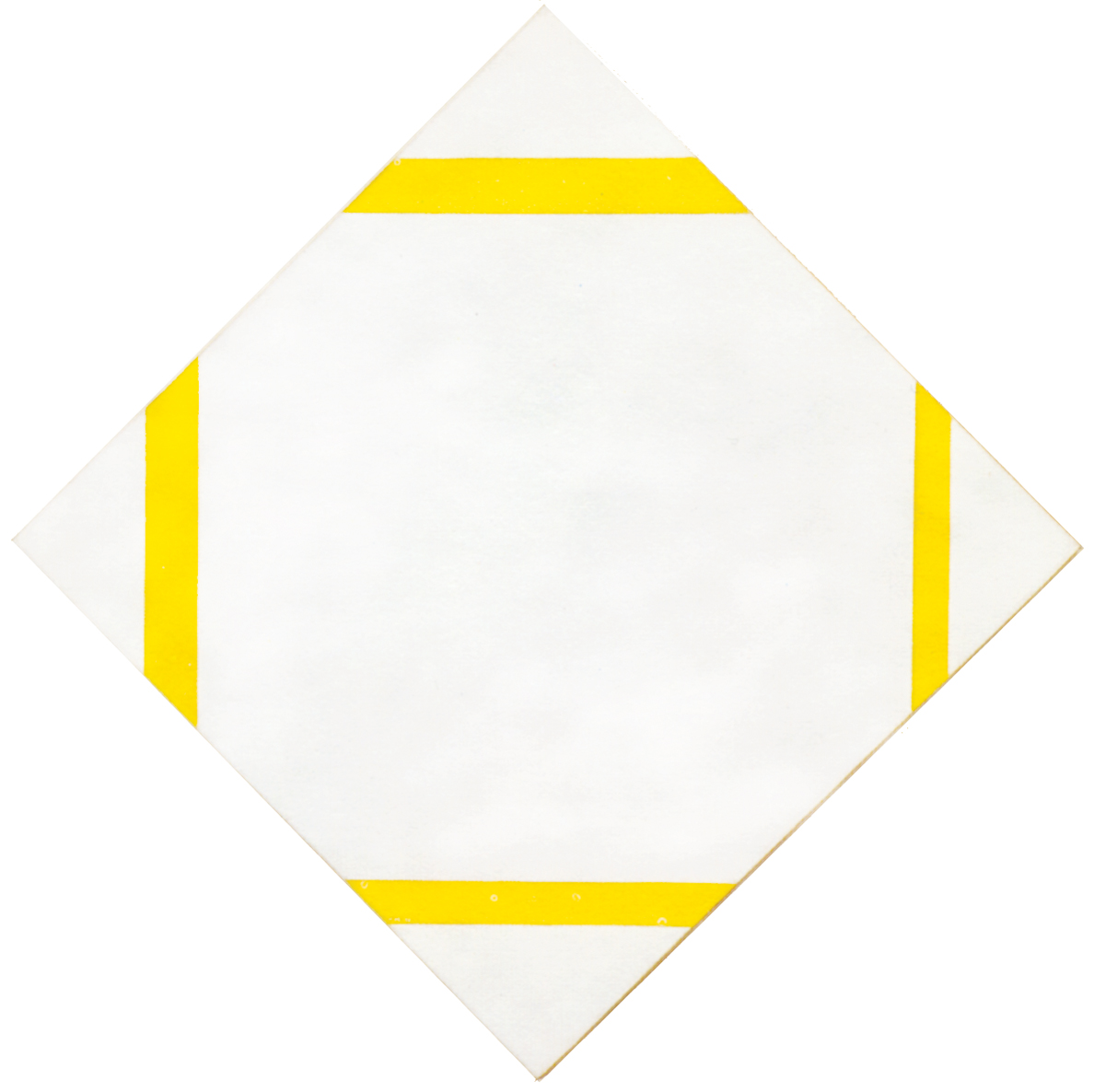An image of nature
In La Disputa del Sacramento everything leads back to mankind, or rather, only to some men figures, as if the relationship with God concerned only a certain elite of the human species. On the left side there is a timid and sparse piece of nature with some trees; the whole sky is subject to the order of the Saints, the Prophets, Christ and a God with human features.
“It is necessary to give a conscious image of nature, until now we have only considered the image of man” (Paul Cézanne).
Giving a conscious image of nature means widening one’s gaze and contemplate the infinite variety of the world of which the human species is only one of the innumerable components.
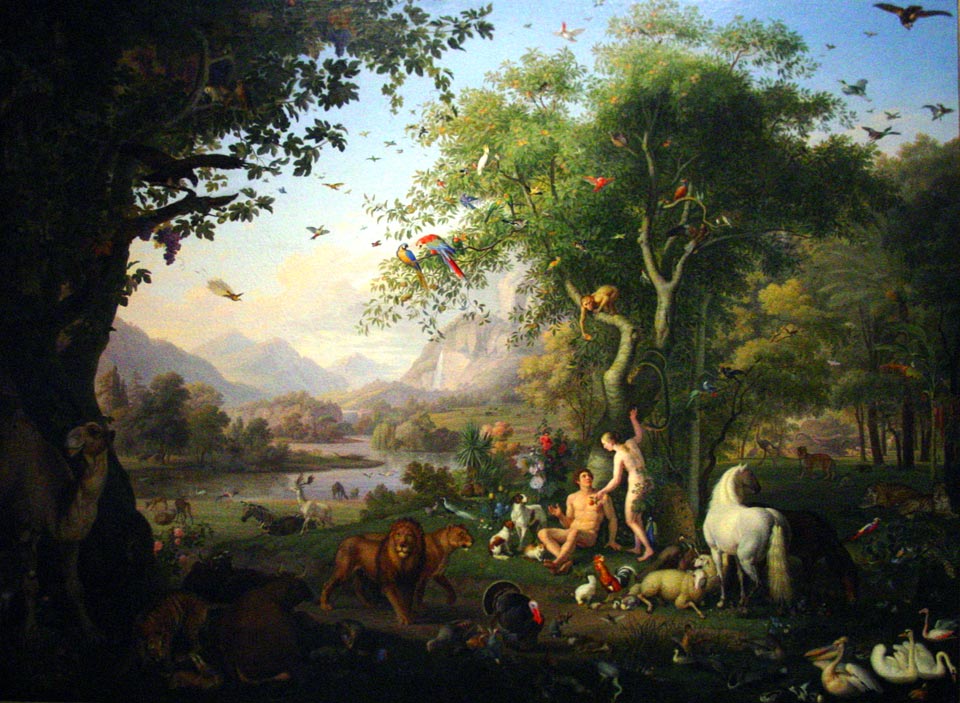
A painting by the Austrian painter Peter Wenzel (1745-1829) shows an attempt to account for the great variety of creatures present in nature. Obviously, no painting can ever represent the infinite multiplicity of nature which science and the media make us aware today. How can the myriad of different existing things be evoked in a painting except by abstracting from the apparent form of each individual entity? On top of that, every single entity which appears to us as one is in reality a complex set of parts, that is to say, a multiplicity.
Everything is one and multiple
The word “individual” with which we define a person means “non-divisible”, i.e. one, but we know that each individual consists of a multiplicity of different parts. I shall recall the example of a tree:
If we observe a tree from a distance, it appears to us as a green dot. As we get closer, the tree reveals an increasing amount of detail, until it reaches an enormous complexity when we contemplate each individual leaf that, on closer inspection, reveals a small universe.
The tree, which initially appeared as a synthetic green spot, now appears as an almost infinite reality. Moving away from the tree, the multiplicity in which we had immersed ourselves turns again into a synthetic green dot.
Each thing is at the same time one and multiple according to the relationship of position and level of perception that we, from time to time, establish with things.
it is a perception of reality that depends on the movement of the subject with respect to the object. This was the basis for Cubism, which, however – as Mondrian later said – did not reach its obvious consequences, namely, a vision that, after accounting for the mutable relationships between subject and object, would find a way to express the multiplicity enclosed in every single thing and at the same time the immeasurable whole of all things? How but by abstracting from the particular outer aspect of every single thing at a given time?
A common design
“There is a design common to all things, plants, trees, animals, men, and it is with this design that one must be in consonance” (Henri Matisse).
The “common design” of which Matisse speaks is what binds and unites all things despite their apparent diversity. How to “draw” such an idea? Cézanne suggested tracing the variety we see in nature to constant forms such as the cone, the cylinder and the sphere. Mondrian finds in the perpendicular relationship a way to express a common design: “The orthogonal position plastically expresses the immutable; the rhythm of the composition expresses the relative.”.
Same basic properties
Expressing the multiple with the widest variation of the same thing (the perpendicular relationship) allows the changeable to be traced back to something more constant. By endlessly varying the relationship between horizontals and verticals and by increasing this variety through changing colors, painting can suggest the multiplicity of the real world without getting lost in it.
Each form (slightly more horizontal or vertical, now of one color and now of another) suggests in fact the widest diversity but all forms share the same intimate nature (the perpendicular relationship and the three primary colors). Also in nature each living form is different from the others but they all share same basic properties.
“There is a common design to all things, plants, trees, animals, humans, and it is with this design that one must be in consonance.” (Henri Matisse)
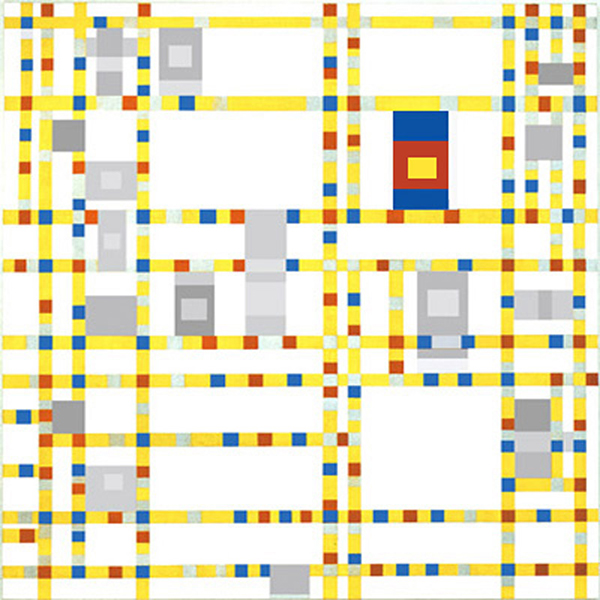
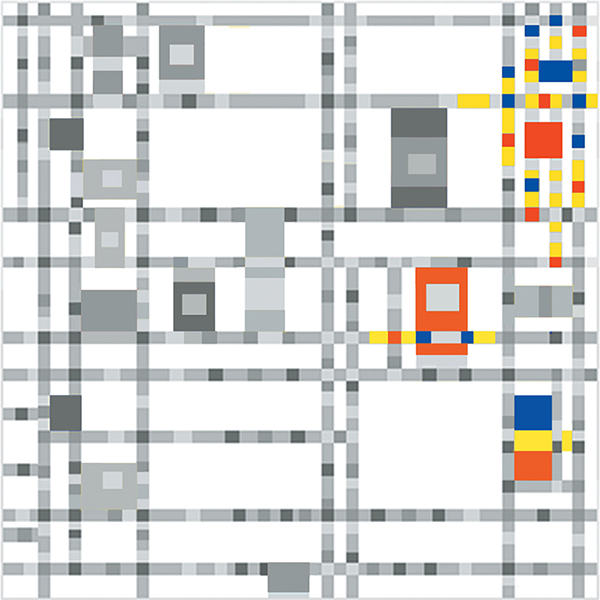
The process that in Broadway Boogie Woogie first unites the multiple and then dissolves it also makes one think of every living organism which, at birth, concentrates in itself an infinite multiplicity of parts but, after a certain lapse of time, dissolves, flowing back into the pure state of energy.
Precisely because it is abstract, the painting succeeds in evoking reality on a universal level.
Not only theology
The theme of the one and the multiple does not concern only theology, philosophy and science but also our common experience of daily life. We are confronted on a daily basis with the relationship between the one and the many when, through observation and analysis, we go deeper and then, overwhelmed by a sea of details, we try to bring everything under control by making syntheses. It is not, however, only an intellectual fact: we often experience a push towards concentration when rational explanations are replaced by a surge of the heart that transforms the fragmentation of a thought representation into the almost absolute synthesis of a felt vision. Sometimes we feel as if we are touching the eternal.
“Eternal life is the main theme of theology. This is what theology must do: educate men to enter the dimension of the eternal already here and now, because eternity is not after, at the end, there: it is now and it is here. Eschatology is not about outer time, the expectation of an improbable return of Christ and clouds of heaven. It concerns our inner time, the intimate dimension of the soul.” (Vito Mancuso)
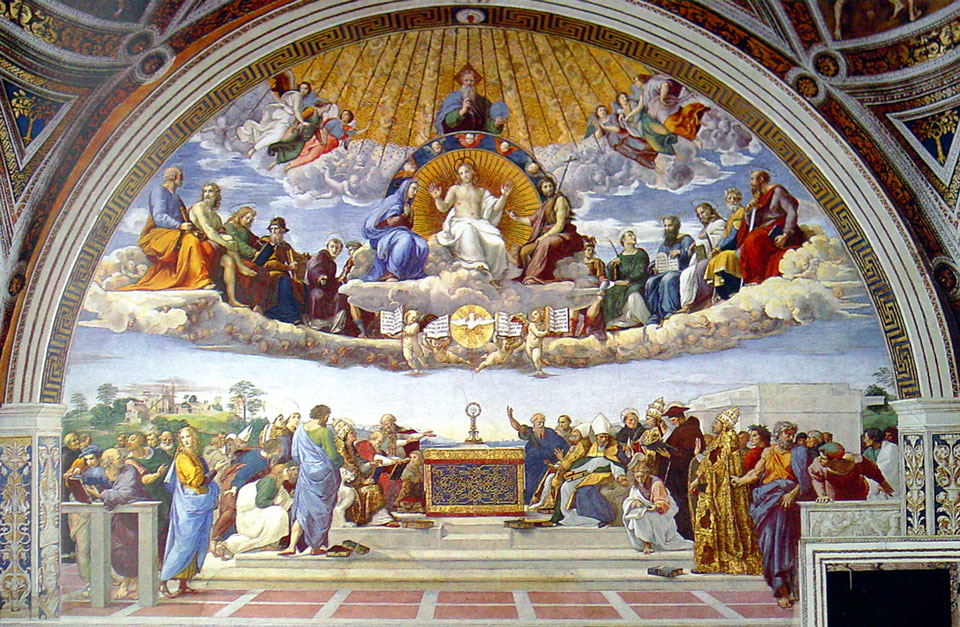
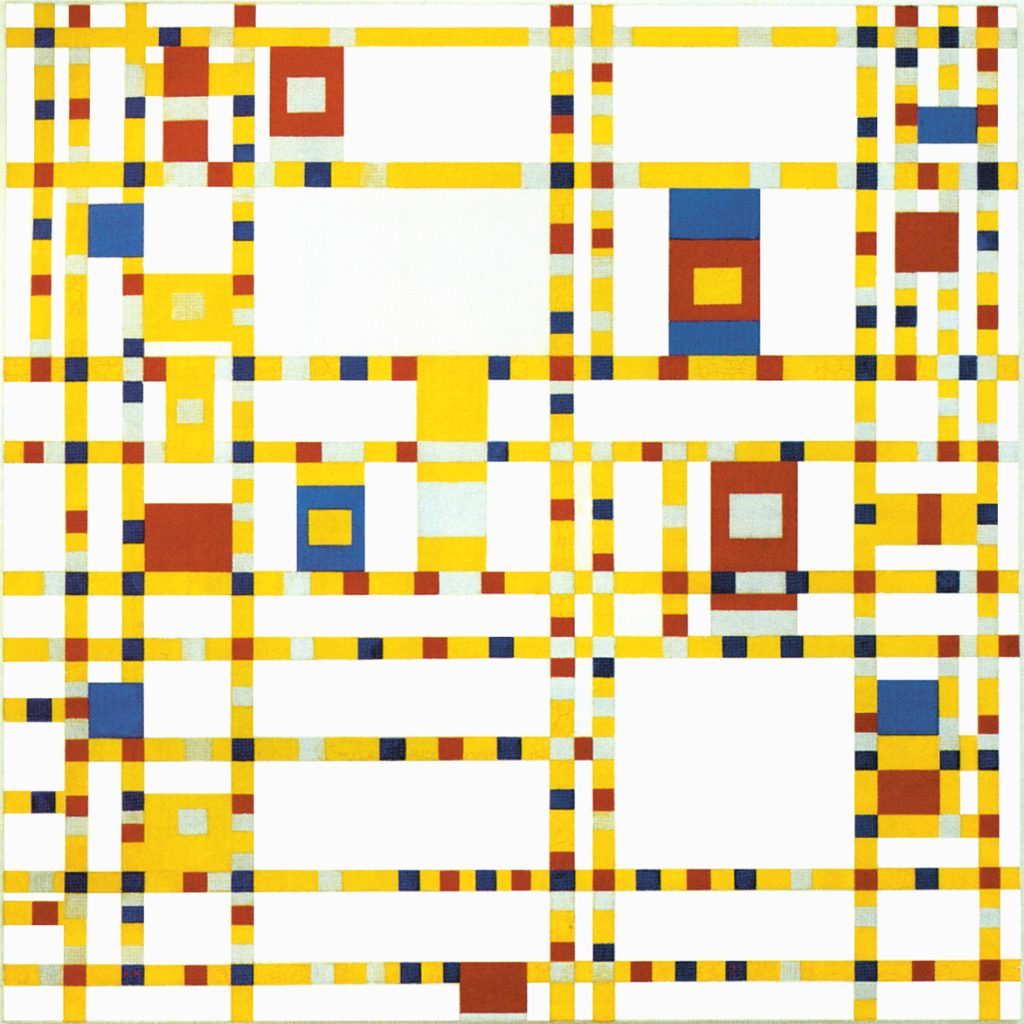
The fresco of 1508 presents the One as a stable summary of everything. The monstrance on the altar is the earthly symbol of a permanent unity that is in heaven. Broadway Boogie Woogie presents the One as the result of a process of aggregation, growth and duration which, however, can disintegrate and reflux into a sea of contradictions (horizontal vs. vertical).
Contradiction generates doubts and questions that necessarily call into question faith. Contradiction, more than a blind belief in dogmas, can play a fundamental role in making faith more authentic and stronger. “Pro veritate adversa diligere” Cardinal Carlo Maria Martini said. In the search for truth, one must take into account reasons that are different and opposite to one’s own.
“There are two kinds of truths: simple truths, where opposites are clearly absurd, and deep truths, recognizable by the fact that the opposite is itself a deep truth.” (Niels Bohr).
Nothing in the world is thinkable for itself, but is instead judged through comparison with its opposite.” (Mondrian)
“The fixed point of a dynamic type makes life a continuous interpretation, but with a coherent interpretative criterion.” (Vito Mancuso)
What can be an “interpretive criterion” for the painter? As Mondrian states: “The orthogonal position plastically expresses the immutable; the rhythm of the composition expresses the relative.”
A firm principle
The artist evokes the immutable with the constant principle of the orthogonal relationship, which allows the widest plurality of situations to be generated while still maintaining a firm grip on the generating principle of all that multiplicity.
“Life thus appears in a perspective that gives it stability but does not immobilize it, that allows it to move but following a direction.” (Vito Mancuso)
Each entity in Broadway Boogie Woogie is different from the others but all respond to the same universal logic (the perpendicular relationship). The situations change but the most intimate structure remains. And it is always due to this intimate structure that the different appearances of the One are generated in the modern painting. The One appears in different forms while its substance remains One and the same.
Matter and spirit
“In past centuries to designate fundamental reality thought made use of the term being. Today physics teaches us that it is necessary to use another term for fundamental reality and that is: energy.” (Vito Mancuso)
Mondrian: “The straight line is the plastic expression of maximum speed, maximum energy and therefore leads to the abolition of time and space.”
The perpendicular lines through which Mondrian elaborates his compositions are not geometric entities affixed to the canvas in a static manner to form a “grid”, but rather visible traces of energy that crosses the space of the canvas, continuing virtually to infinity. The lines are signals of primordial energy that gives rise to the matter of which all things in the world are made, from the simplest to the most complex.
Mancuso goes on to say that “energy generates work… (…) Energy, in fact, is a Greek term (energheia) that means precisely ‘at work,’ ‘in action,’ en-ergon.”
The unity of Broadway Boogie Woogie springs from the energy (the straight lines) that generates matter (the little squares) which is ordered (the symmetrical sequences) and grows towards more stable structures (the planes) until the unitary plane that presents the highest degree of internalization of the outer space as well as equivalence of opposites. In this process we see the primordial energy reach a spiritual dimension. In modern painting there is no dichotomy between the physical and the metaphysical, the material and the spiritual.
“Through the internalization of what is understood as matter and the externalization of what is understood as spirit – so far too separate! – matter-spirit become a unity.” (Mondrian)
From below..
“There is no intelligent design descending from above. There is, however, a design, which has become increasingly intelligent to the point of producing the very reality of intelligence, that has laboriously formed from below.” (Vito Mancuso).
From below, that is to say, from a primordial energy (the straight lines) towards matter (little squares) that grows (planes) internalizing itself (unitary plane).
When we say spirit, we think of sacred and mysterious things, and it is also true that there are many things that the human mind cannot explain. Nevertheless, to say that spirit is a mode of being of energy-matter does not mean at all to reduce or cancel the imponderable of the spiritual sphere. It means, more simply, to put visible and invisible phenomena on the same level; to understand that the visible and the invisible are one “thing”; the “full” depends on the “empty” and vice versa.
As mentioned on another page, in Broadway Boogie Woogie, the color white suggests the “empty” and the invisible; a spectrum of reality that our senses cannot grasp but which are no less real for that. It means considering the imponderable as a natural continuation of the comprehensible and therefore, in essence, it means reconnecting to the whole and, therefore, to what some identify with God and others with the natural universe.
I would like to emphasize that the purpose of these reflections is certainly not to address issues of a theological nature that are not within my reach, but rather to demonstrate that a certain way of understanding abstract painting can restore to art a universal vision that has been lost during the 20th century.
back to past and present
Copyright 1989 – 2025 Michael (Michele) Sciam All Rights Reserved More
